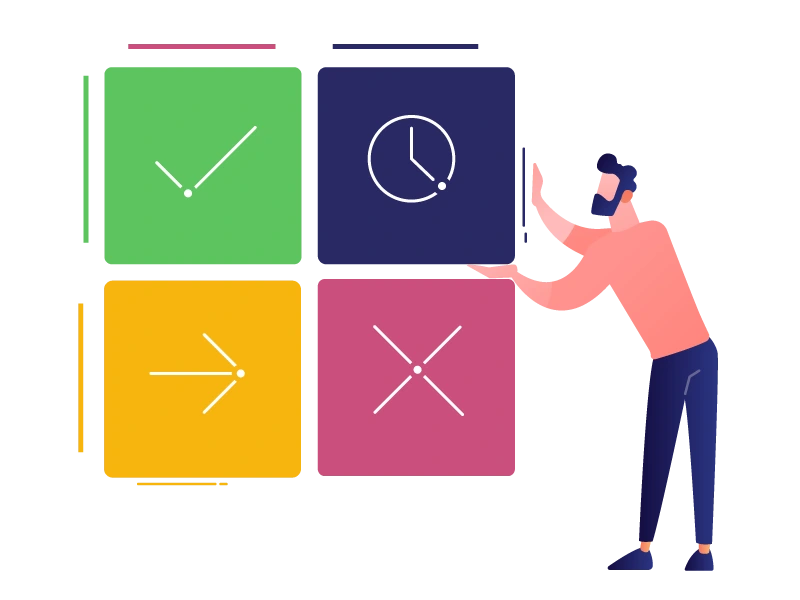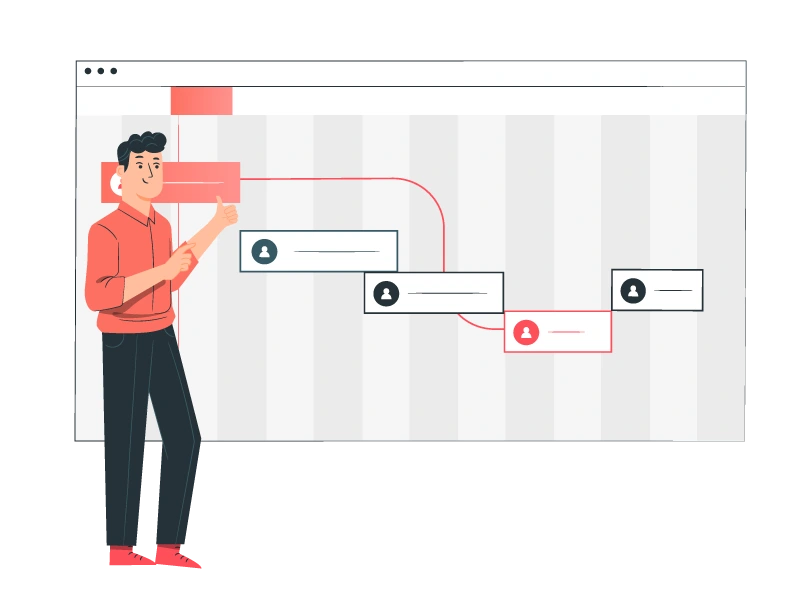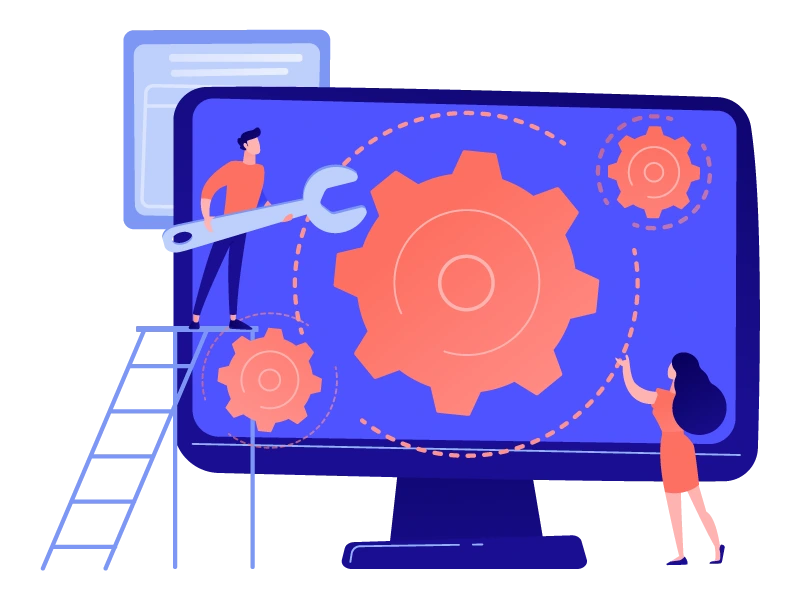Alex has to reply to important client emails, prepare a presentation requested by the manager, and review and approve the social media copy. All of these tasks are urgent at the same time. He does not understand how to prioritize and is ultimately confused and unproductive.
A survey found that 98.2% of employees have trouble prioritizing tasks. This is where the Eisenhower Matrix comes into play. Named after US President Dwight D. Eisenhower, it is a way to prioritize tasks and organize schedules.
The Eisenhower method helps you categorize tasks based on urgency and importance to gain clarity, reduce stress, and focus on what truly matters. Whether you’re an employee juggling multiple deadlines or a manager making strategic decisions, this tool ensures that your energy goes into high-impact work.
Read on as we explain the process and cite examples of its use.
What is the Eisenhower Matrix?
Here’s what your Monday’s to-do list looks like:
- Attend important back-to-back meetings
- Make a weekly report for your manager
- Urgent request from the CEO
Puzzled about what to do first, right?
The Eisenhower Matrix helps you solve this dilemma. With it, you can distinguish between which tasks to do first and which ones can wait. This categorization is done based on their level of urgency and importance. This is why it is also called the Urgent Important Matrix. This matrix helps you divide your tasks into four quadrants to help you pick out your order of priority.
How to distinguish between urgent and important tasks?
The two key terms on which this matrix depends are urgent and important. If you are wondering if both these terms are similar and all your tasks fit in both these categories, then you are wrong. Good management is all about knowing the difference between the two terms.
- Urgent tasks: Urgent tasks are the ones that create a sense of urgency in your workday. These tasks demand immediate attention and always come with a sense of pressure. However, these tasks might not necessarily be extremely important. Generally, the source of these tasks is external, like managers or clients.
For example, reworking or fixing errors, responding to time-sensitive client emails, and addressing unexpected crises.
- Important tasks: These tasks are more about your long-term success. You don’t have to perform them immediately, but not focusing on them can cause challenges or lead to missed opportunities. While you can handle urgent tasks as they come up, the important tasks are mostly self-driven and require long-term planning.
For example, skill development, building strong client relationships, and focusing on high-impact projects.
But how do you decide which task falls under which category? Just ask yourself these questions:
Do I have to finish this task right now, or can it wait?
Are you doing a task because it truly matters and contributes to long-term success or working on it because someone needs it done?
The four quadrants of the Eisenhower Matrix
The Eisenhower method has the Priority Matrix, which divides your tasks into the following quadrants for assessment:
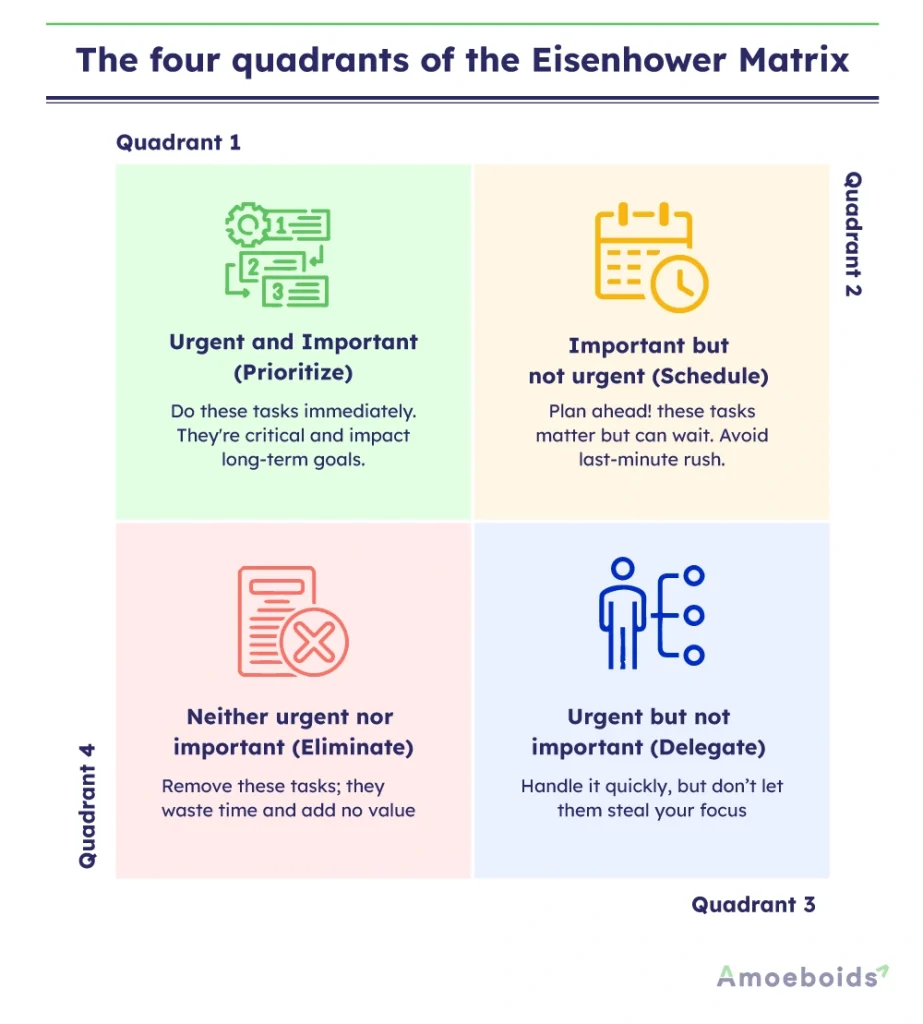
Quadrant 1: Urgent and Important (Prioritize)
Certain tasks are both urgent and important. This means you must perform them immediately, but they also significantly impact your long-term goals. Therefore, these tasks must be your top priority.
For example, preparing a presentation due tomorrow. Since this presentation is for one of your top-priority projects, it will be both urgent and important.
Quadrant 2: Important but not urgent (Schedule)
This quadrant comprises tasks that are important for long-term success. However, they are not very time-sensitive and can be shuffled. But if you avoid these tasks for too long, then it might lead to a quadrant crisis, where you must perform them urgently. The best way out is to schedule these tasks so they are done on time and also with the precision and focus they need.
For example, building a product strategy for a key product in your portfolio
Quadrant 3: Urgent but not important (Delegate)
In this quadrant, some tasks need immediate attention but do not necessarily have a direct impact on you or your business. Mostly, these are routine work tasks. The best way out is to delegate these tasks to others so they are done timely without losing your focus.
For example, scheduling meetings and appointments.
Quadrant 4: Neither urgent nor important (Eliminate)
There are also certain tasks that neither require urgent attention nor are important. As a result, you can simply minimize or eliminate these tasks, as they mostly waste your time and energy.
For example, attending unnecessary office meetings or wasting time on office gossip.
By categorizing your tasks into these four quadrants, you gain a clear vision of how to efficiently use your time to accomplish tasks without losing focus.
How do you prioritize tasks using the Eisenhower Matrix?
We now know the different quadrants of the Urgent and Important matrix; let us see how you can prioritize tasks based on it:
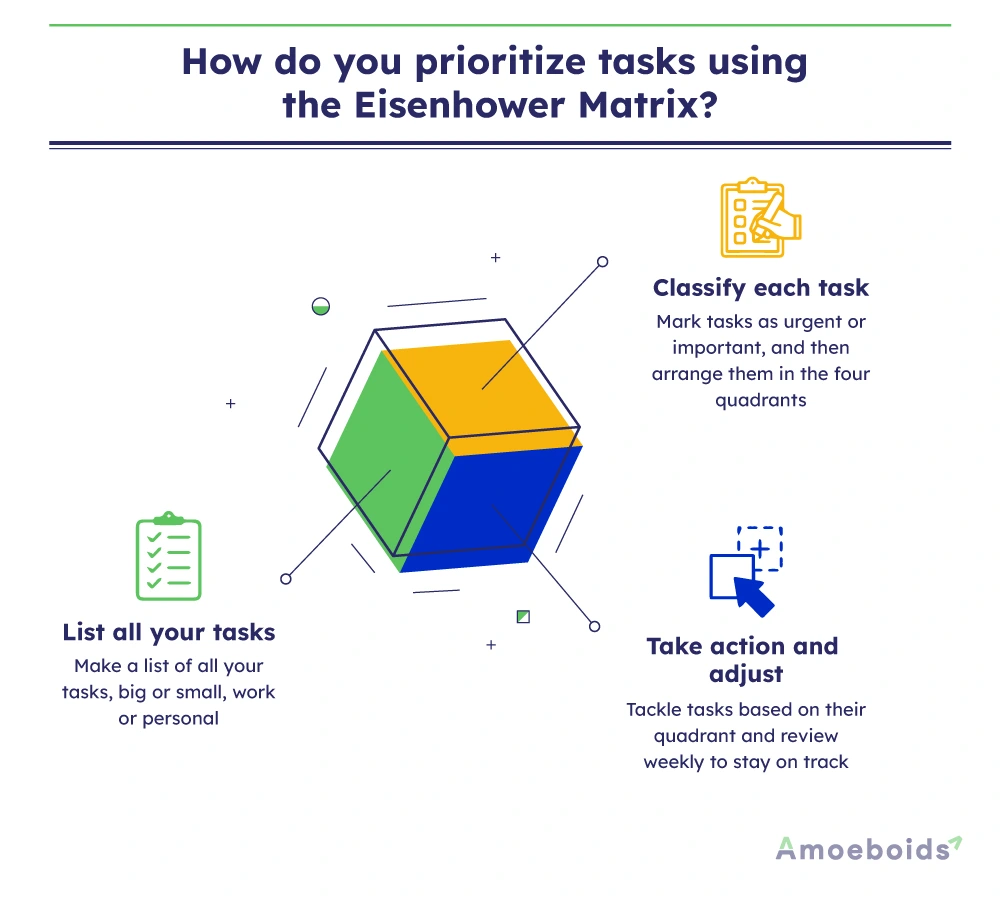
- List all your tasks: Begin by listing all your pending tasks, whether scheduling an appointment or coming up with a marketing strategy. You can even list down personal tasks that require your attention.
- Classify each task: Once you have a list, classify each task as either urgent or important. Once that is done, now divide these tasks into the four quadrants.
- Take action and adjust: Take action for all tasks based on the quadrants principles. Ensure that you review your tasks weekly and make adjustments.
With these steps, you can stay on track without feeling overwhelmed.
Example of Eisenhower Matrix
The most prominent example of the matrix’s principles in action comes from the person it is named after. Eisenhower followed them throughout his life, whether serving as a US Army general or when he was US President.
Now, to understand how to use the Eisenhower method in real life, let’s look at a contemporary practical example of a marketing manager who has four tasks assgined. These tasks are:
Task 1: Finish a client presentation due today
Task 2: Scroll through social media with no specific purpose
Task 3: Respond to routine emails from the sales team
Task 4: Plan next month’s content strategy
Here is how the marketing manager must categorize their tasks and take action:
| Quadrant | Task | Action |
| Quadrant 1: Urgent & Important | Finish a client presentation due today | Prioritize |
| Quadrant 2: Important but Not Urgent | Plan next month’s content strategy | Schedule |
| Quadrant 3: Urgent but Not Important | Respond to routine emails from the sales team | Delegate |
| Quadrant 4: Neither Urgent nor Important | Scroll through social media with no specific purpose | Eliminate |
By using this framework, the marketing manager can reduce stress and manage tasks better.
Conclusion
It is common to feel puzzled and pressured when faced with multiple tasks. But with the right approach and vision, you can complete them efficiently.
The Eisenhower Matrix helps you categorize your tasks into different quadrants. As a result, you can prioritize tasks that need immediate attention and schedule the important but not urgent ones for later. You can also understand which tasks do not require your focus and delegate them. Lastly, another advantage is that you can eliminate redundant tasks.
However, remember that you must regularly review your tasks and make changes to ensure everything stays on track.
FAQs
- Does the Eisenhower Matrix work?
Yes, the Eisenhower Matrix is an effective tool for helping employees and managers prioritize their tasks. By categorizing tasks based on urgency and importance, it enables better time management and decision-making.
- How to use the Eisenhower Matrix?
To use the Eisenhower Matrix, list all your tasks and categorize them into four quadrants: urgent and important, important but not urgent, urgent but not important, and neither urgent nor important. This approach helps in organizing tasks efficiently and focusing on what truly matters.
- What is the Eisenhower Matrix used for in time management?
The Eisenhower Matrix is used to prioritize urgent and important tasks while scheduling or delegating less critical ones. It helps individuals and teams optimize their workload by identifying tasks that can be eliminated or postponed, ultimately improving productivity.
- Who created the Eisenhower Matrix?
The Eisenhower Matrix is named after Dwight D. Eisenhower, the 34th President of the United States. It is inspired by his approach to decision-making, which focused on distinguishing between urgent and important tasks to improve efficiency.
- Is the Eisenhower Matrix effective?
Yes, the Eisenhower Matrix is highly effective for prioritizing tasks, reducing time wasted on unimportant activities, and improving overall focus. By structuring tasks systematically, it helps individuals and teams work more efficiently and make better use of their time.
